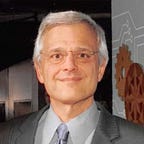Hardware manufacturing is a dance. Who leads?
You and your design team are feeling some relief; Your prototype is no longer a prototype. It is ready to go into production. Perhaps your company already works with a Contract Manufacturer (CM).
But let’s suppose there’s a new requirement your current CM can’t meet. Perhaps you need Flex PCB or Conformal Coating or a Wiring harness. Whatever the reason, you find yourself shopping for a new CM
Picking a Partner
Naturally, you will shop for a new CM based on your product requirements. And, of course, you will also look the CM’s reputation and track record. But that is not all you need to look at. Competition and technology are driving big changes in the Designer|CM relationship.
We’ve got to work on our communication
There are changes brewing in how Designers communicate with CMs; this is mainly driven by the communication modes available via the internet. Let’s characterize the relationship by naming the two extremes: Concierge and Self-Serve. Let’s also associate some typical communications methods with each:
You might consider the Concierge end of the spectrum as traditional. You might consider the Self-Serve end as emerging. Not so fast. Let’s look at what’s good and what’s bad with each of these.
Face to Face
Perform a google search ‘electronic manufacturing services’ + <your city name>’ . You will most likely find more than one CM near you. They come in all sizes and capabilities. Did you find one that meets your requirements? Ask for a site visit. In the end, they might not be able to meet your requirements. In fact, with any fabricator you should research their capabilities. By seeing their fabrication process and speaking to the technical staff, you will gain priceless intelligence. You may also get a feel for their trustworthiness and willingness to work with you. After a few such visits, you will build a list of the right questions to ask each subsequent CM. You may even start to develop a checklist.
Phone Calls
In the Concierge model, the phone is heavily used. Phone calls are great for the initial group and “get to know you” communications, especially when coupled with shared design documents (Gerbers, XYRS data, BOM, etc). During production, it will be the method-of-choice for urgent communications.
In the Self-Serve model, phone calls may never be used. The Self-Serve model is based upon web automation to reduce costs. Each question and hands-on interaction between CM and customer reduces their margin on the manufacturing, so these interactions are optimized to be a minimum. When questions come up, it often happens over a written medium, unless there is urgency to the communication.
Email is the standard for Concierge style communication, especially when documentation needs to be captured or files need to be transferred. It is the way quotes are sent. It is the way CAD files get sent. But email can easily get out of control. Right now at Small Batch Assembly (where I do a mix of these methods), I have a Concierge level customer. There have been over 60 email exchanges and production hasn’t started.
In the Self-Serve model, reliance on email is reduced to a minimum. Questions still come up, but they are front loaded into the web interface. In assembly, questions about parts orientation are the most frequent and are usually settled in one email exchange:
Web Automation
In the Concierge model, there is little to no automation . The design files are emailed in the format the customer chooses. It requires conversion or regeneration at by the CM, often using the same CAD and CAM software that the client used to generate the files in the first place.
Self-Serve CMs are making heavy use of Web Automation. Automated quoting, Drag-and-drop CAD file submission and even customer verification of part placements, tied to the firmware of the actual pick and place machines. This is all done in service of reducing the amount of labor required at the CM. The lower human capital costs and reduced setup times means the boards can be assembled quicker and cheaper; these savings are passed on to the customer, which is driving the overall popularity in the Self-Serve market.
So Who Leads?
If you are working with a Self-Serve CM, you will be forced to match their format. But even if you and your CM lean toward the Concierge Model, you should still let your CM define what’s needed. This will inevitably lead to less required communication and faster turnaround overall. In turn, this means more competitive pricing and fewer mistakes.
